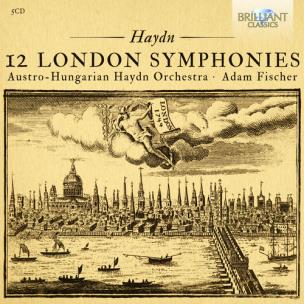- Regulamin
- Koszty dostawy
- Kontakt
- Dziś w ofercie 237 630 produktów
KSIĄŻKI
- Albumy
- Beletrystyka
- Biografie
- Dla dzieci i młodzieży
- Edukacja
- Ekonomia i biznes
- Ezoteryka
- Historia
- Informatyka
- Kalendarze
- Komiksy
- Kryminał i sensacja
- Kultura i sztuka
- Literatura faktu
- Literatura kobieca
- Literatura piękna
- Medycyna
- Nauka języków obcych
- Nauki humanistyczne
- Nauki przyrodnicze
- Nauki ścisłe
- Podręczniki
- Poradniki
- Prawo i administracja
- Przewodniki i podróże
- Psychologia
- Religia
- Sport
- Technika
- Zdrowie i uroda
ZABAWKI
- Artykuły dla niemowląt
- Bączki
- Bujaki i skoczki
- Ciągnij / pchaj
- Dla niemowlaka
- Grzechotki i gryzaki
- Karuzele i pozytywki
- Maty i centra zabaw
- Projektory i lampki
- Sortery i piramidki
- Zabawki
- Edukacyjne i kreatywne
- Figurki
- Klocki
- Lalki
- Pojazdy
- Pluszaki i maskotki
- Sport i rekreacja
- Zabawa w dom
- Zabawki drewniane
- Puzzle
- Do 200 elementów
- 201-500 elementów
- 501-1000 elementów
- Ponad 1000 elementów
- Puzzle 3D
ART. PAP
- Artykuły biurowe
- Artykuły piśmiennicze
- Bloczki i kartki samoprzylepne
- Dziurkacze
- Kalkulatory
- Nożyczki i nożyki
- Skoroszyty
- Teczki
- Wizytowniki
- Zszywacze
- Artykuły szkolne
- Akcesoria szkolne
- Modelowanie
- Notatniki i zeszyty
- Piórniki
- Plecaki i torby
- Pojemniki na śniadanie
- Pomoce naukowe
- Przybory matematyczne
- Przybory rysunkowe
- Upominki i gadżety
- Akcesoria do książek
- Artykuły balowe
- Breloki i zawieszki
- Drobiazgi, różności
- Kubki
- Oferta Świąteczna
- Papeteria, kartki i naklejki
- Skarpetki Many Mornings
- Upominki
GRY
MULTIMEDIA
- Audiobooki
- Beletrystyka
- Biografie i wspomnienia
- Dla dzieci i młodzieży
- Fantastyka
- Filozofia i religia
- Historia
- Literatura faktu i reportaż
- Poradniki
- Sensacja i kryminał
- Filmy DVD/BD
- Animowane
- Biograficzne
- Fantasy
- Horrory
- Komedie
- Romanse
- Science Fiction
- Sensacyjne / kino akcji
- Thrillery
- Muzyka CD
- Alternatywna
- Blues
- Dla dzieci
- Jazz
- Klasyczna
- Piosenka aktorska i poetycka
- Pop
- Rock
- Świąteczna i kolędy
- Akcesoria GSM
- Głośniki
- Kable i adaptery
- Klawiatury
- Myszy
- Słuchawki
PROMOCJE
ZDROWIE
LEGO

Haydn: The 12 London Symphonies
Wydawca:
Brilliant Classics
EAN:
5028421946016
oprawa:
Kartonowa
format:
14.0x12.0cm
język:
angielski
rok wydania:
2013
(0) Sprawdź recenzje
Opis produktu
Zasady bezpieczeństwa
Joseph Haydn, often referred to as 'The Father of the Symphony', has an enormous 109 of these works to his name. Within his vast oeuvre of symphonies is a group of 12, written between 1781 and 1795, which are known as the 'London' symphonies, composed during or for his two visits to the English capital. Brimming with inspiration and character, the 'London' symphonies contain many of the legendary moments of Haydn's works, including the drumroll opening of No.103, the ticking of the clock in the Andante of No.101, the jubilant sound of the triangle in the finale of the 'Military', and that arresting interjection of the timpani in the 'Surprise'. This collection brings together these wonderful works, each of which contributed to Haydn's crafting of the symphonic form that would later be taken up by none other than his pupil and friend, Wolfgang Amadeus Mozart.
The Austro-Hungarian Haydn Orchestra was formed by Adam Fischer in 1987 with the express purpose of performing the works of the revered composer. The Orchestra is rather appropriately based in the Esterházy Palace -- where Haydn was resident for much of his life -- and has toured extensively throughout Europe, the USA and Asia, performing in events such as the Mozart Festival (New York) and the BBC Proms (London).
Other information:
- Recorded 1987--1989, in the famous Esterhazy Palace in Eisenstadt, Austria, where Haydn spent many years of his life composing for the Count.
- Joseph Haydn's so-called London Symphonies, written between 1781 and 1795 during his two extensive visits to the British capital, count among his most famous and popular works. At the peak of his creative powers, he created such masterworks as the Drumroll, Military, London and Surprise symphonies, but also the ones without nickname are models of perfection in terms of form and content, rules and emotions.
- The performances of the Austro-Hungarian Haydn Orchestra conducted by Adám Fischer are still considered one of the best complete recordings, fully capturing Haydn's style: wit, charm, fire, balance and transparency.
- Contains extensive liner notes on the composer and his symphonies.
CENA:
50,75
zł
Cena detaliczna:
59,99 zł
15%
rabatu
Najniższa cena z ostatnich 30 dni: 50,75 zł
Produkt niedostępny
Uwaga!!!
Ten produkt jest zapowiedzią. Realizacja Twojego zamówienia ulegnie przez to wydłużeniu do czasu premiery tej pozycji. Czy chcesz dodać ten produkt do koszyka?


Wybierz wariant produktu
